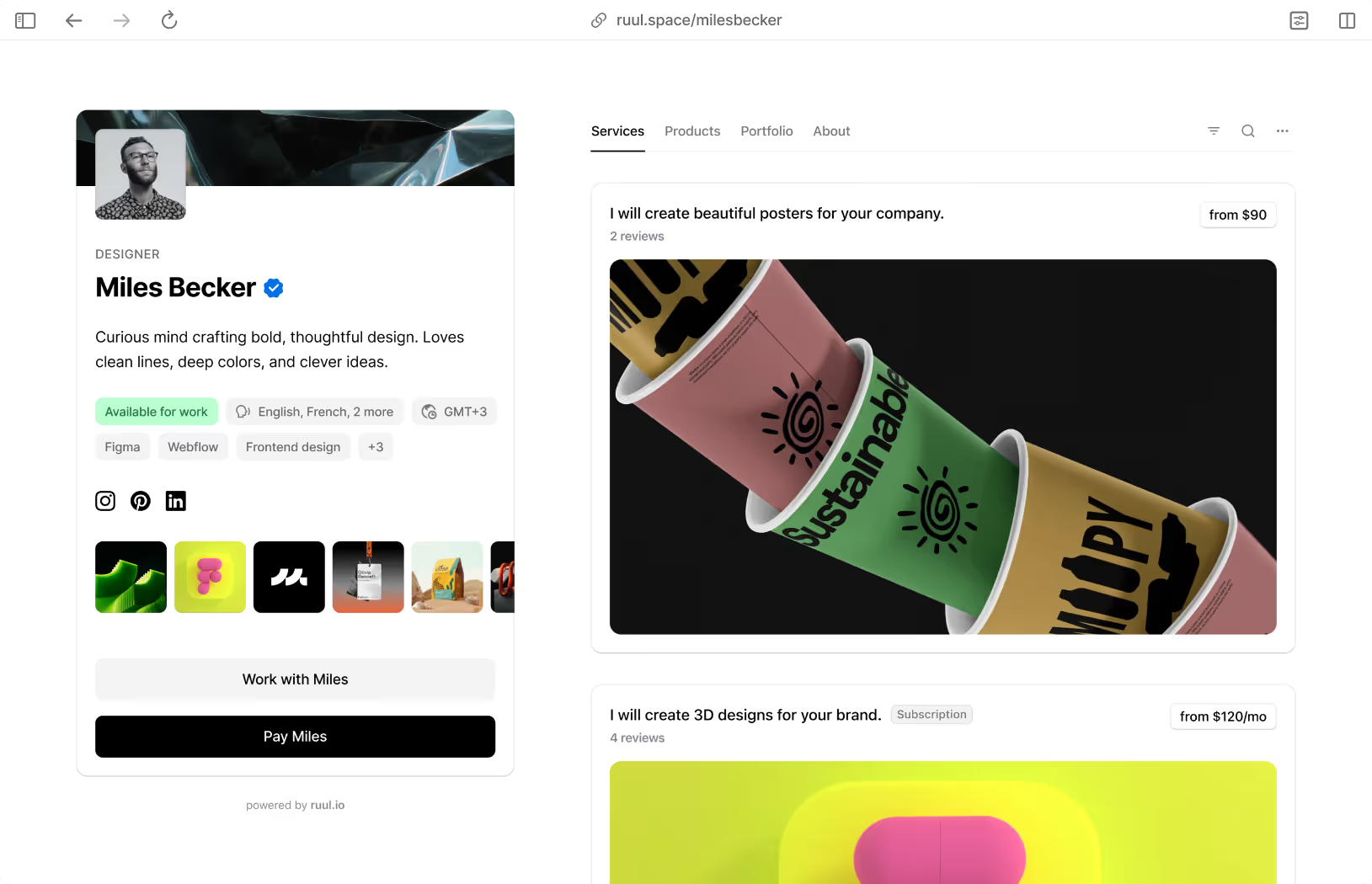In freelancing, the art of pitching is crucial since it directly affects your level of success. This guide will take you through the elements of effective freelance pitching, from understanding its significance to crafting strong pitches that will make clients choose you. By putting these strategies into practice, you'll acquire the confidence necessary to effectively navigate the freelancing market and secure fulfilling jobs that advance your career.
What is pitching?
Pitching is a skill of elaborately expressing yourself, skills and the services you provide to clients or employers. It is the ability to create a compelling message that efficiently transmits the significance of a freelancer's proposition and the unrivaled features they offer. An effective pitch will capture the reader, communicate directly to their needs or challenges, and succeed in convincing the client that the freelancer is up to the task. Whether by written proposals, verbal presentations or digital communications a pitch is an important part of the beginning of professional collaboration and the obtainment of freelance projects. This demands a mix of creativity, clarity and critical thinking to leave a lasting impression and win opportunities.
Why is pitching important?
Pitching is a crucial part of freelance work as it opens the door to receiving assignments and the establishment of client relations. It lets the freelancers highlight their expertise and separates them from their competitors by means of precise and succinct communication of their value proposition. Through pitching, freelancers can build credibility by presenting their ability to understand client needs and demonstrate their suitability for a certain project. Furthermore, proficient pitching increases clients' confidence and trust, therefore resulting in recurrent business and references. Indeed, when freelancers master the art of pitching, they are able to have a competitive edge over their competition, increase their client base, making it easier to find new clients and achieve success in their careers.
What should be included in a client pitch?
Creating a good pitch is done by picking out the most important aspects to feature and using them to demonstrate your value proposition. This enables you to sell your idea to prospective clients. Here's what should be included in a pitch:
- Introduction: Begin with a compelling hook that grabs a reader's attention.
- Freelancer's Background: Talk about relevant experience and abilities you possess.
- Understanding of Client's Needs: Display a thorough awareness of what client needs to achieve.
- Proposed Solutions: Provide customized solutions consistent with clients' needs.
- Project Plan: Outline the plan, time frames, and deliverables precisely.
- Call to Action: Suggest to the client to make the next steps, such as scheduling a meeting or moving forward with the project.
How to create a successful freelance project pitch?
A winning freelance project pitch is a strategic quest focused on demonstrating your proficiency in the field, knowledge of the client's requirements, and skills to deliver what is expected from you. Here's a detailed guide on how to pitch yourself as a freelancer:
- Research thoroughly: Before jumping right to your pitch, make sure you're very conversant on the client, the project, and their company. Get familiar with the environment in which your clients' operation is, including who they are serving and who they are competing with. Identify the client's pain points, goals, and any special needs for the project. This research will create a solid ground for your pitch and help you to align its angle with the target audience.
- Tailor your pitch: Diversity is an inefficacy roadblock as not every home run happens every time. Personalize your presentation to make the client feel comfortable and convinced that you will fulfill their demands and desires. Ensure that the language and terminology used are in alignment with the industry and brand identity of the client. Illustrating that you have taken the time to grasp the customer's individual situation will give a more relevant and authentic aspect to your proposal.
- Start with a captivating introduction: Catch the audience from the very beginning by writing an appealing introduction. Make an opening statement that is appealing to the client and leads to a connection between you. You can scour the internet for freelance pitch examples to get an idea. Briefly introduce yourself, mentioning your relevant experience and expertise. Express your enthusiasm for the project and your willingness to work with the client.
- Highlight your unique value proposition: Highlight the value you will add to this project and why you are the most suitable candidate for the task. Highlight your strengths, your experiences, and your achievements which make you stand out from other competitors. Emphasize how your expertise can tackle the client's particular issues and help them achieve their goals. This is the part where you show what makes you stand out and why clients should hire you instead of others.
- Propose a detailed solution: Develop a project work plan, which should include the tasks, timeline, and project results. Discuss how your proposed solution aligns with the client's objectives to address their pain points. Showcase your practical experience by sharing examples or case studies from the projects that were completed before and which you can prove to have been successful with your approach. Be specific and let the client know what exactly he or she will get while working with you.
- Address potential concerns: Try to foresee any questions or worries the customer could have and then deal with them decisively in your presentation. Present some steps or ways to reduce the risks or do away with the barriers. Give confidence by pointing out your trustworthiness, competence, and your aim to deliver well. If you anticipate and resolve potential client concerns initially, this will ultimately enhance your relationship with the client.
- Close with a strong call to action: Finalize your freelance pitch with a convincing call to action that invites the customer to act right away. Invite the client to discuss the matter further, set a meeting or initiate the project. Show appreciation for the chance of presenting your proposal and display enthusiasm regarding the prospect of collaboration. An appealing call to action builds your interest in working together with the client and makes them take action.
Benefits of pitching your freelance projects
The benefits of pitching your freelance projects are tangible and may have a big influence on your career and business growth. Here are key advantages of incorporating pitching into your freelance strategy:
Expanding Your Client Base
One of the lovely things about pitching is you can reach those prospective customers who have not known about your services. Through being proactive in showcasing what you can do and why you are best for your client, you can increase the number of clients and the number of contacts you have. Whether sending cold emails, attending networking events, or using online platforms, pitching is always one way to display your value proposition to a broader audience. By consistently reaching out to multiple clients, you improve your ability to win projects and cultivate lasting relationships with the variety of clientele spanning many industries.
Increasing Your Earning Potential
Pitching allows you to become a candidate for higher-paying contracts and customers. Through skillful articulation of your uniqueness and showcasing your competence, you are therefore able to charge higher rates for your offerings. Consequently, pitching what your business offers gives you a chance to bid for conditions and contracts that match your objectives. While you perfect your pitching and stamp yourself down as a guru in your discipline, you tend to draw clients who are willing to pay more for your expertise, thus, leading to higher income and profitability for your freelance business.
Refining Your Communication Skills
Pitching is all about effectively demonstrating your value proposition to a prospective customer through clear and crisp communications. By means of curating and presenting your pitches, you develop writing skills, oral communication technique, and relational communication. Indeed, you learn to convey your thoughts clearly, break down your message into segments and address your clients' worries adequately.
The communication skills developed in sales pitch are excellent tools not only for selling, but as well for client meetings, project management and teamwork. By consistent polishing of your communication skills via pitching, you become a more productive and compelling communicator, consequently, raising your chances of success as a freelancer.
How to find clients to pitch?
Finding clients to pitch requires a proactive approach and strategic networking efforts. Here are several effective strategies to help you find clients to pitch your freelance services:
- Online platforms: Consider checking out some websites specifically for freelancing, for instance, Upwork, Freelancer, and Fiverr in which clients post their projects and hire freelancers. Write a powerful bio highlighting your skills, and list your past work so as to draw in clientele. Actively look for applicable projects and submit focused applications to have a chance to be accepted.
- Social media networking: Leverage platforms like LinkedIn, Twitter, and Facebook to find clients. Join industry-specific groups and participate in discussions to show your knowledge. Provide users with valuable information to emerge as an expert in your field and therefore, have them follow you through your network.
- Networking events: Attend conferences, meetups, and networking events within your industry to have direct contact with potential clients directly. Prepare an elevator pitch describing your expertise and your services and exchange contacts with others. Send follow up emails or customized messages to effectively sell your services.
- Referrals and recommendations: Harness your current client base, colleagues and business contacts for referrals. Request your happy clients to publicize you to their network or provide testimonials which depict your expertise and credibility. Provide incentives to those clients that refer new business to you to create new leads for your work.
- Cold outreach: Use Google, LinkedIn or any other information service to find out middle-sized and start-up companies which could require your service. Write personally designed emails or LinkedIn messages about who you are and how you can be of help which is specific to those needs. Do not hesitate to use follow-up emails in a friendly but persistent manner to pitch your services further.
Conclusion
The skill of pitching is of particular importance to freelancers striving to stand out and succeed in the competitive marketplace. With the use of the strategies highlighted in this guide, you will be able to raise your confidence, sell yourself, attract new clients, and have a successful freelance life. Proper personalizing, demonstration of value, consistent follow up and proper nurturing of client relationships helps to maximize opportunities and nurture client relationships.










